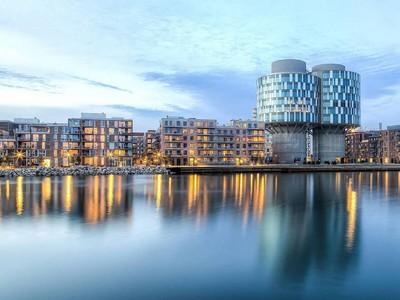
The five-minute city: Inside Denmark’s revolutionary neighbourhood
Steve Rose
Copenhagen: It’s not often that the worlds of town planning and traffic management become mired in controversy, but in recent years the innocuous concept of the “15-minute city” has sparked outrage in online forums, among cynical politicians and on the streets of British cities such as Oxford. The originator of the concept, urban planner Carlos Moreno, has even received death threats. All of this has hinged on the spurious conspiracy theory that 15-minute cities were part of some shady global population-control agenda, rather than a desire to simply create more pleasant neighbourhoods.
If the concept of having all your basic amenities within 15 minutes’ distance was enough to provoke such hostility, what would the conspiracy theorists make of a five-minute city? Fortunately, they have failed to notice that Denmark has already built such a place: Nordhavn, an emerging new neighbourhood of Copenhagen. If they visited today they might be disappointed, or perhaps converted.
You could possibly see Nordhavn as some sort of new-world-order dystopia, where people are only pretending to be happy because they are being brainwashed by the 5G towers, or something. But a more likely explanation is that this is what city-making looks like when you get everything right: human-scaled, pedestrian-friendly, architecturally diverse, environmentally standard-setting, lots of waterfront. A place people are happy to hang around, even on a chilly winter’s day: shopping, cycling, walking their dogs, jogging, even cold-water swimming at the public beach. It does feel pretty quiet here, but that’s not because there are no people; it’s because there are hardly any cars – and those that do glide by are electric.
This is the real underpinning of the five-minute city concept. “Cars are not welcome here,” says Lars Riemann of the planning consultants Ramboll, which won the competition to design Nordhavn in 2008, along with the architects Cobe and Sleth and other partners. Nordhavn was a former industrial landscape: a 2 sq km peninsula to the north-east of the city centre that operated as a freeport for more than a century. But with Copenhagen’s population and popularity on the rise, the city decided to redevelop these docklands, providing homes for 40,000 people and workplaces for another 40,000 over the next 40 years. Today, Nordhavn’s population is about 6,000.
“If you go back in time, when you did city planning, you would say: ‘Where do the roads go? How do the cars get from A to B?’ That was your main priority,” says Riemann. “Then we’d put bike lanes next to the roads, pedestrian areas next to that and so on. Here, we did the opposite. We said: ‘What does a walkable city look like? What do the streets look like? What do people like to experience as they are walking?’” Transport-wise, they started with a new metro line, then cycle routes. “At the end, it was like: ‘OK, so now that we have all this infrastructure for walking, biking and public transit, is there still some room for cars?’”
The “five-minute” tag (which was coined long before 15-minute cities became popular) stemmed from this. Around each of the metro stations, the planners drew circles of 400 metres radius. “That’s what you can walk in five minutes,” says Cobe’s project director, Rune Boserup, from his office – a converted warehouse in Nordhavn, as it happens. (Architects love it round here: the Danish superstar Bjarke Ingels has also built his new headquarters just up the quay.) “Within a circle like that, you would have a mix of residential areas and office buildings, social infrastructure such as schools and kindergartens, retail, cafes – everything that you would need in your daily life.”
